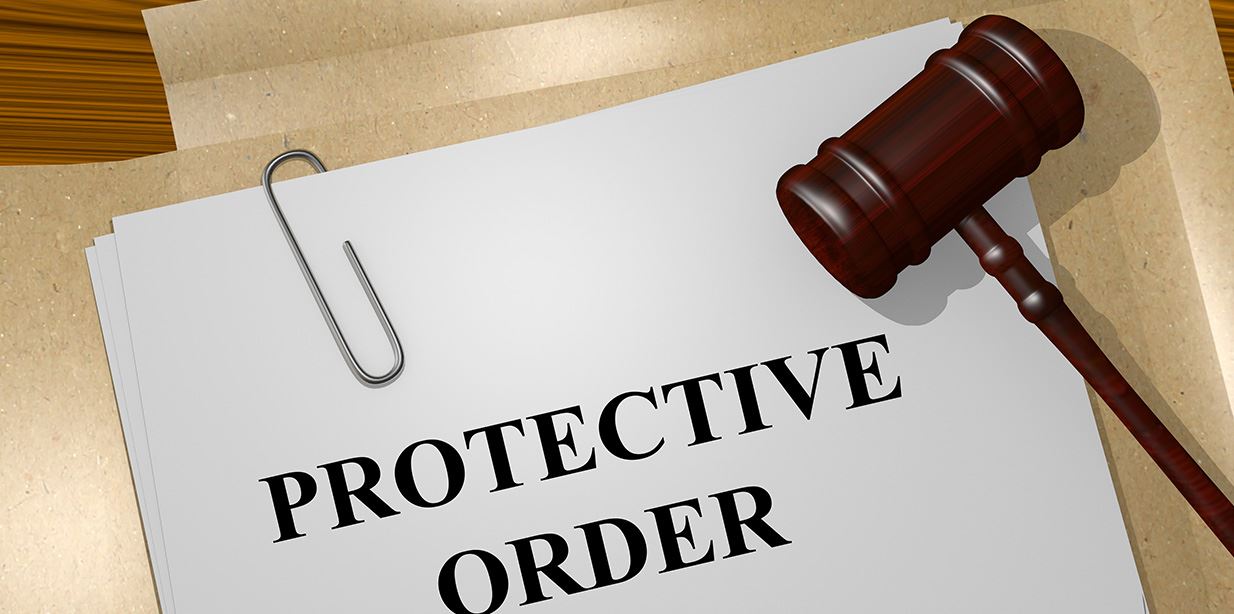

Protective Orders
A person can obtain an order of protection for themselves or their children, in either the District or Circuit Courts. A Protective Order can be sought by an individual who has a familial or sexual relationship with the individual against whom protection is sought because of abuse.
In Maryland, examples of abuse include:
- An act that causes serious bodily harm (e.g., kicking, punching, choking/strangling, shoving, shooting, hitting with an object, stabbing, or biting);
- An act that places a person in fear of imminent serious bodily harm (including threats of harm);
- Assault;
- Rape or sexual assault;
- False imprisonment;
- Mental injury to a minor child;
- Stalking; or
- Revenge porn
To be eligible for a Protective Order, you must fall into one of these categories:
- A current or former spouse of the abuser (also called the Respondent);
- A cohabitant of an abuser;
- A person related to the respondent by blood, marriage, or adoption;
- A parent, stepparent, child, or stepchild of the respondent or the person eligible for relief who resides (or resided) with the respondent or person eligible for relief for at least 90 days within 1 year before the filing of the petition;
- A vulnerable adult;
- A person who has a child in common with the respondent;
- A person who had a sexual relationship with the abuser within 1 year before filing for relief; or
- A person who alleges that within 6 months before the filing of the petition, the respondent committed rape or a sexual offense or attempted rape or sexual offense.
Temporary Protective Order
To obtain immediate relief, an individual can obtain a Temporary Protective Order which will remain in effect for not more than 7 days after law enforcement has given the abuser a copy of the order (i.e., service). You must attend a Final Protective Order hearing to extend the length and scope of protection contained in the Temporary Protective Order.
Final Protective Order
As the person seeking relief, you hold the burden of proof by “preponderance of the evidence,” to show more likely than not that the abuse occurred, and you are eligible for relief.
If the Judge finds that the abuse did occur, the Judge may order one (or all) of the following for up to 1 year:
- Order the abuser to stop abusing or threatening to abuse you;
- Order the abuser to stay away from you and to not try to contact you or harass you;
- Order the abuser to stay out of your home;
- If you are married to the abuser AND you were living together at the time of the abuse, the court can order the abuser to leave the home where the two of you live;
- If you are not married to the abuser, but were living together at the time of the abuse AND your name is on the lease or deed for the home OR you lived with the abuser for at least ninety 90 days within the past year, the court can order the abuser to leave the home;
- Order the abuser to stay away from your job, your school, the place where you may be staying, from your children’s school(s), and from your family members’ homes;
- Order that you be given temporary custody of any children that you have with the abuser (including the use of reasonable and necessary force to return the minor child to the custodial parent) and, depending on safety considerations, the Judge may condition or restrict visitation;
- Order that you be given temporary custody of any pets you own with the abuser;
- If you are married, order the abuser to pay money to help support you during the order;
- If you have children with the abuser, order the abuser to pay support for the children;
- If you own a car with the abuser, the court may order that you have sole use of the car for the period of the order (you must tell the judge that the car is necessary in order to get you to work or to transport a child);
- Order the abuser or you to participate in a counseling program (domestic violence and/or drug/alcohol);
- Order the abuser to surrender firearms;
- Order the abuser to stay away from a child care location; or
- Any other relief that a judge determines to be necessary to protect you from abuse.
Peace Order
If you do not meet the qualifications for a Protective Order, you still may be able to obtain a Peace Order to protect against continued harassment and stalking, abuse, trespass, malicious destruction of property, revenge porn, misuse of telephonic communication or illegal visual surveillance. You must file for a Peace Order within 30 days of the act occurring and peace orders are in effect for 6 months, with the option to extend it for an additional 6 months.
Preparing for Your Hearing
In preparing for your Protective Order or Peace Order hearing, it is important to remember that like any hearing, the Court will render its decision based on the evidence presented. The following actions can assist you in obtaining the necessary evidence:
- Take pictures of any visible bruises.
- Get copies of any police reports.
- Determine whether anyone saw the abuse and ask that person to testify on your behalf.
- If you have not already done so, talk to the police about filing criminal charges.
- If you are seeking financial relief (also known as Emergency Family Maintenance), get copies of your most recent pay stubs, living expenses (mortgage, lease, utilities, car insurance, car payment, daycare, etc.) and any income (pay stubs) or bank information you may have regarding the abuser.
Attorney Assistance
These types of hearings involve safety issues and relationships that are highly emotional and conflictual in nature. To ensure the outcome desired, the assistance of an attorney who understands the applicable law and can be your calming voice in communicating your concerns to the court may be extremely helpful. Emily Koning, Senior Attorney with FLAG, has vast experience advocating for clients in Protective Order and Peace Order hearings. She will explain to you the applicable law, your options and the best course of action. Emily is a compassionate, empathetic listener who will devote the time necessary to fully understand all aspects of your case and then guide you through the process with strong, proactive advocacy providing you with the voice you need and the advocacy you deserve.
To schedule an initial consultation with Emily please contact our office at (410) 884-0400.
Domestic Violence Resources
- Locate Your Local Domestic Violence Program -Maryland Network Against Domestic Violence https://www.mnadv.org/
- House of Ruth Maryland - https://hruth.org/
- Hopeworks (Howard County) - https://wearehopeworks.org/
- SARC (Harford County) - https://www.sarc-maryland.org/
- Women’s Law Center - http://www.wlcmd.org/
- Abused Persons Program (Montgomery County) https://www.montgomerycountymd.gov/HHS-Program/Program.aspx?id=BHCS/BHCSAbusedPerson-p207.html
- DVS Legal Services (Montgomery County) http://www.dvslegal.com/
- Annapolis YWCA (Anne Arundel County) https://www.annapolisywca.org/domestic_violence
- Baltimore County Family Crisis Center https://www.familycrisiscenter.net/

Our Testimonials
Read What Our Clients Have to Say-
"Emily was fantastic to work with! She walked me through every step along the way and made sure I was comfortable with what was happening. She is patient, kind, and understanding but also fights for what her client deserves."Becky
-
"Ms. Thomas was a pleasure to work with during my case. She was an excellent advocate for my son and won my case for him. He now has all the help he needs in school because of her determination."Toula
-
"Michael was very responsive to our communication, organized, prepared, knowledgeable and provided excellent advocacy in the courtroom."Jean and Tom
-
"I hired Emily for a very difficult incredibly complicated divorce and child custody case, and she could not have been more supportive and attentive throughout it. She will leave no stone unturned and fight for you and your children's best interest."Michael
-
"Sarah has the unique ability to get right to the point and tell it ” like it is” while also being sensitive and considerate, which means that she isn’t wasting time and racking up needless billable hours."Janine
-
"Ms. Jessica Keister is a fantastic attorney! She cares so much about her clients! She helped me with my divorce and was both professional and empathetic. Her advice was on point and led to a good outcome for me and my family."Susan
-
"I was very nervous coming into this situation as my divorce & custody of my children were paramount! Jessica was quick, prompt, thorough & punctual! She reassured me that she would do everything in her power to have a decision made in my favor."Mark
Contact Us
Schedule a Consultation

